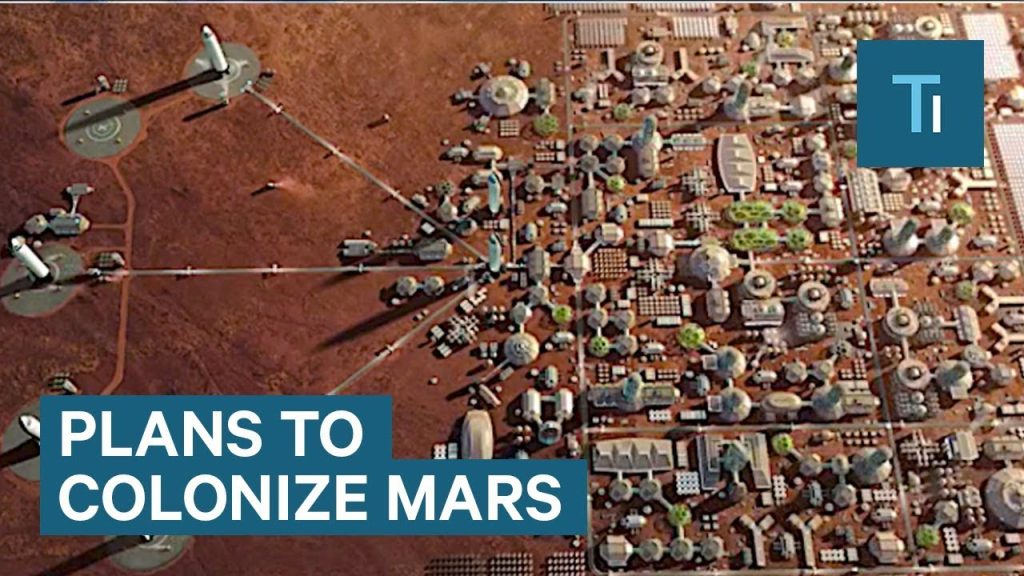
Connecting the Dots: Elon Musk’s Companies and the Vision of Mars Colonization
This endeavor is far more than a dream—it’s a meticulously crafted strategy that leverages the capabilities
of Musk’s ecosystem of companies. From rockets and energy systems to artificial intelligence and communication
networks, Musk’s ventures collectively form a blueprint for humanity’s multi-planetary future.
SpaceX: The Gateway to Mars
At the forefront of Musk’s Mars ambitions is SpaceX, the pioneering aerospace company that has revolutionized space travel.
The Starship program, designed to carry humans and cargo to Mars, is a monumental step toward achieving interplanetary travel.
SpaceX’s innovations in reusable rocket technology significantly reduce the cost of space exploration, making the idea of Mars
colonization economically viable.
However, SpaceX is just the tip of the iceberg. Musk’s vision for Mars requires an interconnected system of technologies to
address the challenges of sustaining life on a distant, inhospitable planet.
Tesla: Sustainable Energy and Transportation
Tesla, Musk’s flagship company, provides the critical energy solutions necessary for life on Mars. Solar panels and advanced
battery systems developed by Tesla will power Martian habitats, ensuring a renewable and sustainable energy supply.
Tesla’s contributions extend beyond energy. Its expertise in electric and autonomous vehicles could transform transportation on Mars.
Without fossil fuels, electric vehicles will be essential, and Tesla’s self-driving technology could optimize mobility in the colony’s
harsh and unpredictable terrain.
The Boring Company: Building Underground Infrastructure
The Boring Company, often seen as a side project, plays a vital role in Musk’s Mars strategy. On Earth, it develops advanced tunneling
technologies to ease urban congestion, but on Mars, it could provide the infrastructure for underground habitats.
Mars’ surface is bombarded with radiation and experiences extreme temperature fluctuations. Tunnels built by The Boring Company would
shield settlers from these hazards, creating safe, habitable environments. Additionally, underground systems would facilitate
transportation, resource distribution, and even agriculture, forming the backbone of a sustainable colony.
Starlink: Communication Beyond Borders
Reliable communication is essential for any colony, and Starlink, SpaceX’s satellite internet service, is a game-changer. On Earth,
Starlink connects remote areas, but on Mars, it would establish a robust communication network.
A decentralized satellite system would ensure seamless communication between Martian settlements and Earth. It would also support
critical functions such as remote operations, scientific research, and real-time collaboration, bridging the vast distance between
the two planets.
Neuralink: Enhancing Human Adaptability
Neuralink, Musk’s brain-computer interface company, could revolutionize human adaptability in extraterrestrial environments. On Mars,
settlers will face immense psychological and physiological challenges, including isolation, cognitive strain, and communication delays
with Earth.
Neuralink’s technology could enhance cognitive functions, mitigate mental health challenges, and even facilitate direct communication
between humans and machines. This integration of biology and technology would be pivotal for overcoming the limitations of the human
body and mind in Mars’ extreme conditions.
Optimus: Robotics for Mars Settlements
Optimus, Tesla’s humanoid robot project, is another critical piece of the puzzle. These robots are designed to perform repetitive,
dangerous, or physically demanding tasks. On Mars, Optimus could take on roles ranging from habitat construction and maintenance to
resource extraction and agricultural work.
By deploying robots like Optimus, early Martian settlers could focus on higher-level planning and innovation while reducing human
exposure to hazardous conditions. Optimus represents a leap forward in automating labor-intensive processes, a necessity for building
and sustaining a Martian colony.
Earth as a Testing Ground for Mars
Each of Musk’s companies operates as an experimental platform, refining technologies that will eventually be deployed on Mars.
For example, Starlink’s global connectivity and Tesla’s self-driving systems are not just commercial successes—they’re prototypes
for the communication and transportation systems required on Mars.
Similarly, The Boring Company’s tunnels and Neuralink’s brain-computer interfaces are being tested on Earth, with lessons learned
applied to Mars. By solving problems in terrestrial settings, Musk is effectively preparing humanity for the challenges of living
on another planet.
Political Leverage and Strategic Partnerships
Musk’s vision for Mars is not just technological—it’s deeply political. His connections to influential leaders, including his ties
to the Trump administration, have positioned him to secure critical support for his projects.
Under Trump, the U.S. space program experienced a revival, with the creation of the Space Force and increased NASA funding. SpaceX
benefited significantly from these policies, receiving contracts that accelerated its innovations. Musk alignment with policymakers
who support private space exploration ensures a favorable regulatory environment and access to resources needed for Mars missions.
The Bigger Picture
Elon Musk’s interconnected ventures reveal a grand strategy for Mars colonization. SpaceX provides the means of transportation,
Tesla powers the colony, The Boring Company builds infrastructure, Starlink ensures communication, Neuralink enhances human
capabilities, and Optimus automates labor. Together, these companies form a cohesive system designed to overcome the immense
challenges of interplanetary settlement.
While critics question Musk’s motives and methods, his work undeniably pushes the boundaries of innovation. By leveraging Earth
as a testing ground, Musk is laying the foundation for humanity’s future among the stars.
provides the technology, infrastructure, and adaptability needed to make this vision a reality.
What Next Musk?
As we connect the dots, it becomes clear that Musk is not merely preparing for the challenges of Mars; he is redefining humanity’s
relationship with space, technology, and our own potential. Whether or not his vision succeeds, Musk’s work ensures that humanity
continues to dream, innovate, and explore beyond the confines of Earth.


